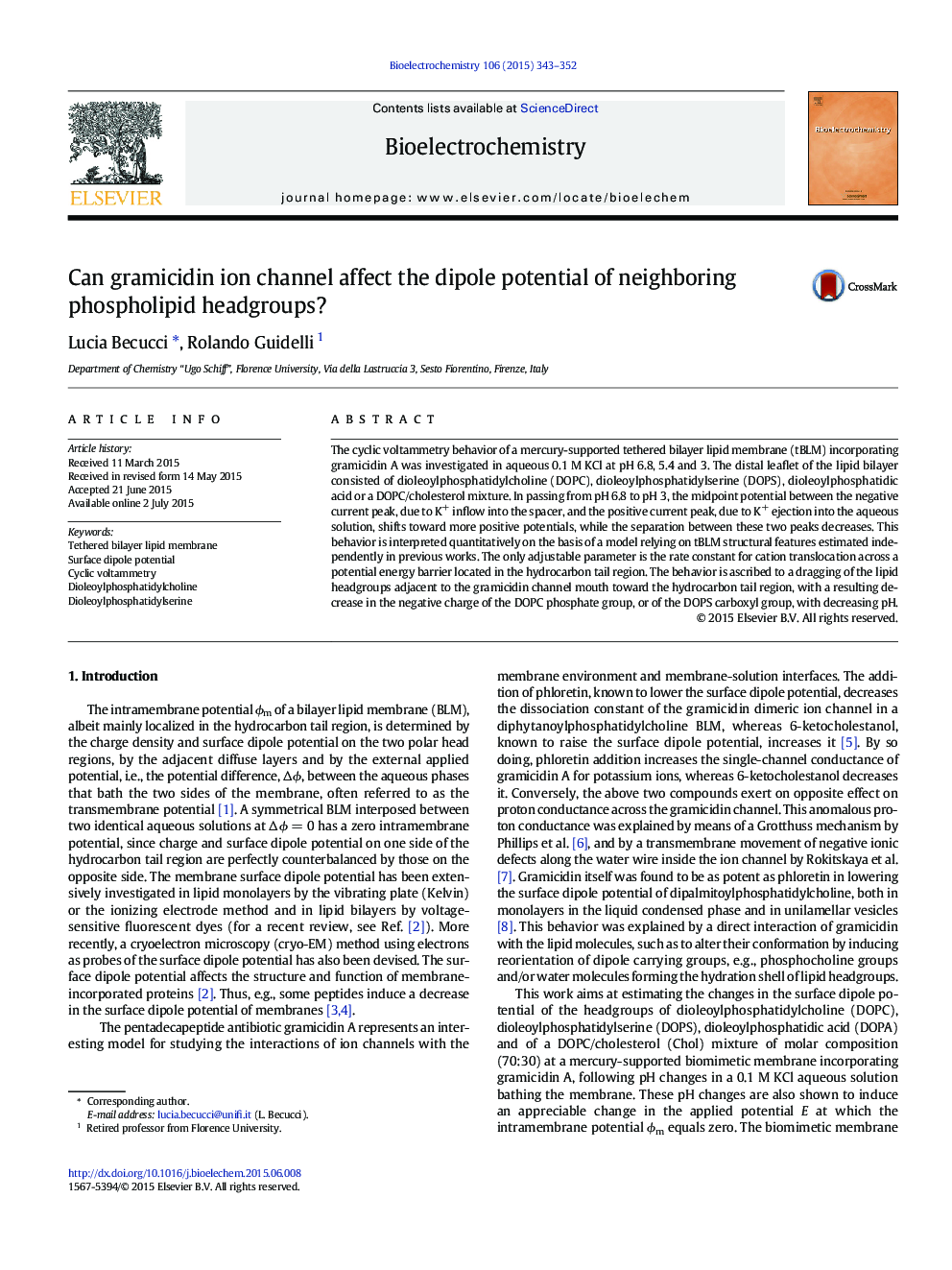| Article ID | Journal | Published Year | Pages | File Type |
|---|---|---|---|---|
| 1270744 | Bioelectrochemistry | 2015 | 10 Pages |
•The cyclic voltammogram of the gramicidin ion channel depends strongly on pH.•The ion channel mouth affects the dipole potential of adjacent lipid headgroups.•Changes in dipole potential of lipid headgroups with varying pH are estimated.•Voltammograms of ion channels in tethered bilayer lipid membranes are modeled.
The cyclic voltammetry behavior of a mercury-supported tethered bilayer lipid membrane (tBLM) incorporating gramicidin A was investigated in aqueous 0.1 M KCl at pH 6.8, 5.4 and 3. The distal leaflet of the lipid bilayer consisted of dioleoylphosphatidylcholine (DOPC), dioleoylphosphatidylserine (DOPS), dioleoylphosphatidic acid or a DOPC/cholesterol mixture. In passing from pH 6.8 to pH 3, the midpoint potential between the negative current peak, due to K+ inflow into the spacer, and the positive current peak, due to K+ ejection into the aqueous solution, shifts toward more positive potentials, while the separation between these two peaks decreases. This behavior is interpreted quantitatively on the basis of a model relying on tBLM structural features estimated independently in previous works. The only adjustable parameter is the rate constant for cation translocation across a potential energy barrier located in the hydrocarbon tail region. The behavior is ascribed to a dragging of the lipid headgroups adjacent to the gramicidin channel mouth toward the hydrocarbon tail region, with a resulting decrease in the negative charge of the DOPC phosphate group, or of the DOPS carboxyl group, with decreasing pH.
Graphical abstractFigure optionsDownload full-size imageDownload as PowerPoint slide
